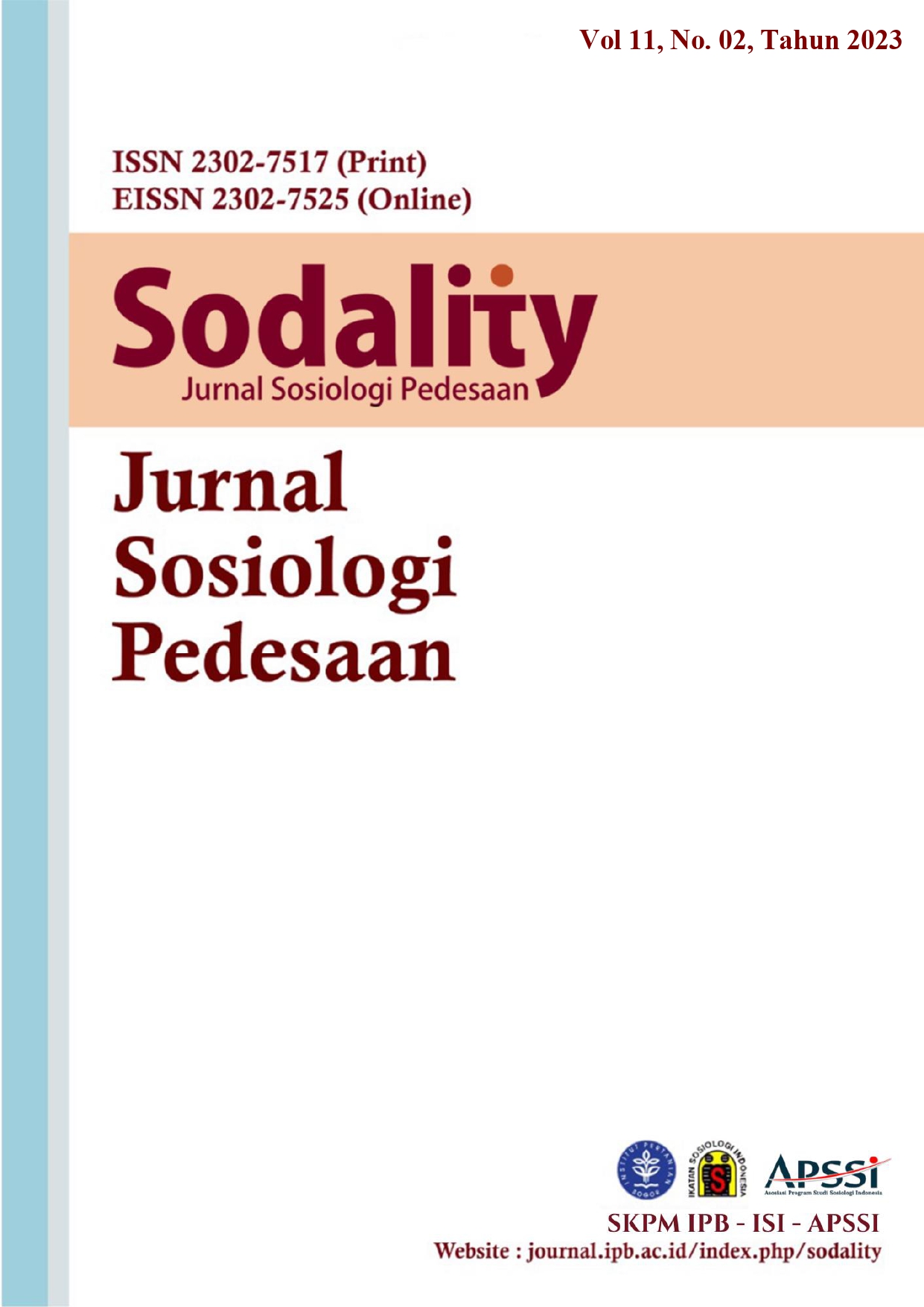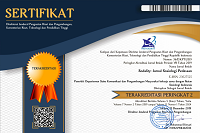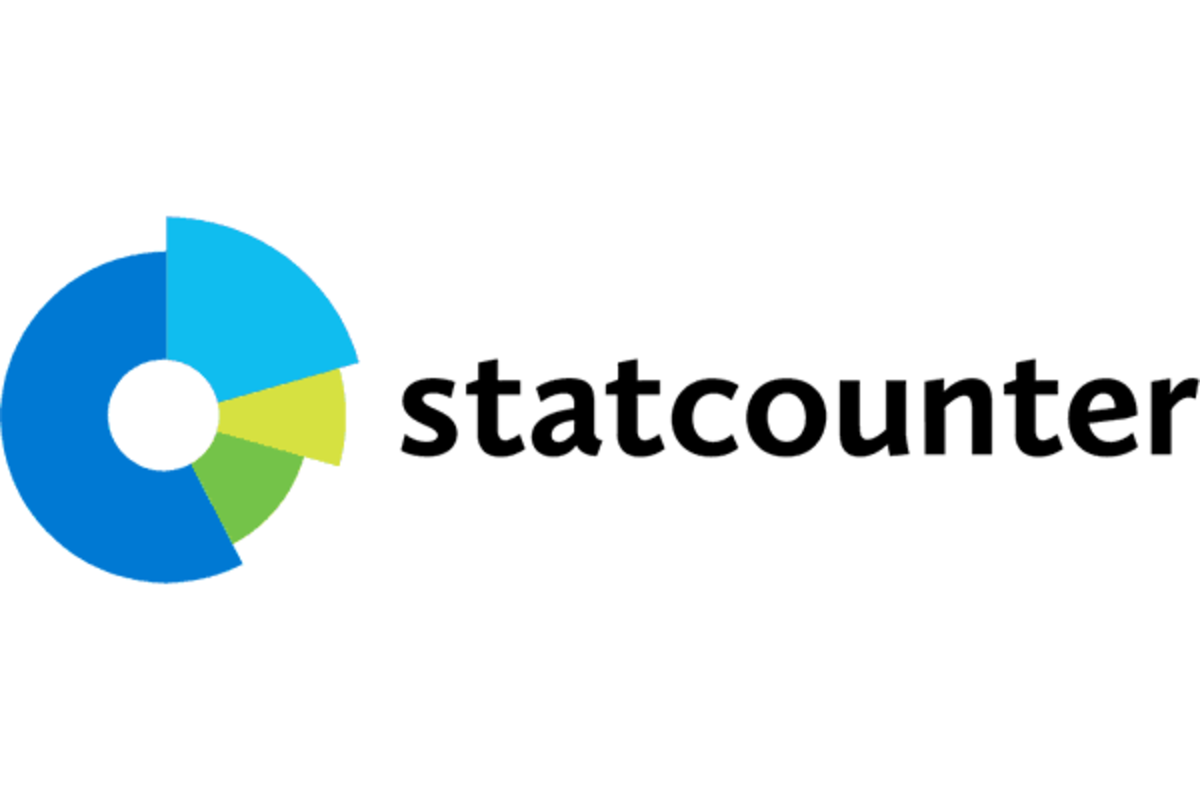Micro-hydro Power Plant-Based Social Entrepreneurship Practices in Rural West Java (A Case Study of Cintamekar Village, Subang Regency)
Abstract
Cintamekar Village in Subang Regency, West Java, is a peripheral village. One of its characteristics is that residents, especially from the pre-prosperous group, have not been able to enjoy the flow of electricity even though the source of electricity through the PLN is available. To overcome this, on the initiative of the non-governmental organization Initiative of People's Business and Economy (IBEKA), a PLTMH was built in the area. The purpose of this research is to analyze factors affecting social entrepreneurship for community empowerment. The research uses a quantitative approach which is reinforced by qualitative data. The method chosen is the case study. The results showed that overall, the formation of cooperatives was able to build social entrepreneurship by creating social benefits (score 3.6), carrying out social innovation (score above 3), and making the economic activities of citizens more diverse (score 4). The results from the data processed using SEM-PLS show that the development of social entrepreneurship is influenced by the characteristics of technology and innovation by 0.281. The communication channel factor is more dominant in influencing the development of social entrepreneurship, which is equal to 0.487. These two factors explained that there was a change of 33.3 percent in social entrepreneurship. The social entrepreneurship practice of the PLTMH program in Cintamekar Village is built on the characteristics of technology, innovation, and communication channels. The characteristics of technology and innovation as well as communication channels are the driving force for residents to change their social entrepreneurship behavior. This means that the technological and innovation characteristics of the PLTMH development and the communication channels used, through cooperative institutions, have a good impact on the development of social entrepreneurship in Cintamekar Village, and as a whole, they are able to build social entrepreneurship in creating social innovation and economic activities.
References
Arend RJ. 2021. Modelling Social Entrepreneurship: Consideration of the Reacting Forces. J Soc Entrep. 12(3):399–416. doi:10.1080/19420676.2020.1718744.
Bansal S, Garg I, Sharma GD. 2019. Social entrepreneurship as a path for social change and driver of sustainable development: A systematic review and research agenda. Sustain. 11(4). doi:10.3390/su11041091.
BPS. 2019. Kecamatan Serang Panjang.
Dacin P A DTM and MM. 2017. Social Entrepreneurship: Why We Don’t Need a New Theory and How We Move Forward From Here. Acad Manag Perspect. Vol. 24, N Social entrepreneurship.
Figueroa ME, Kincaid DL, Rani M, Lewis G. 2002. Communication For Social Change: An Integrated Model For Measuring The Process and Its Outcomes. The Communication for Social Change Working Paper Series: No.1 [Internet]. New York (USA). [diunduh 2020Oct5] Tersedia pada:http://www.communicationforsocialchange.org/pdf/socialchange. New York.
Firdaus Nur. 2014. Pengentasan Kemiskinan Melalui Pendekatan Kewirausahaan Sosial. Ekon dan Pembang. Vol 22, No Kewirausahaan sosial:55–67. doi:DOI: https://doi.org/10.14203/JEP.22.1.2014.69-81.
Hulgard L. 2010. Discourses of social entrepreneurship–Variations of the same theme? EMES Eur Res Netw.(10):1–21. http://base.socioeco.org/docs/wp_10-01_hulg_rd__web_.pdf%5Cnhttp://www.emes.net/site/wp-content/uploads/WP_10-01_Hulgaard__web_.pdf.
Irdansyah I, Meiyani E. 2018. Rekonstruksi Sosial Ekonomi (Studi Bumdes Sebagai Pemberdayaan Masyarakat Nelayan Desa Sangiang Kabupaten Bima). Equilib J Pendidik. 6(2):119–124. doi:10.26618/equilibrium.v6i2.2593.
Lacap JPG. 2018. Social Entrepreneurial Intentions of University Students in Pampanga, Philippines. J Entrep Bus. 6(1):1–16. doi:10.17687/jeb.0601.01.
Lestary E. 2004. Kelompok Tani Sebagai Media Interaksi Sosial (Kajian Analisis Fungsional Struktural Talcott Parson). AGRITEXTS J Agric Ext. 16(2):59–73. https://jurnal.uns.ac.id/agritexts/article/view/43645.
Mair J, Martí I. 2006. Social entrepreneurship research: A source of explanation, prediction, and delight. J World Bus. 41(1):36–44. doi:10.1016/j.jwb.2005.09.002.
Maulinda K. 2019. Proses Pengembangan Social Enterprise Agriculture: Studi Biografi Pada Agradaya. J Stud Pemuda. 7(2):133. doi:10.22146/studipemudaugm.40114.
Niko N-, Yulasteriyani Y. 2020. Pembangunan Masyarakat Miskin Di Pedesaan Perspektif Fungsionalisme Struktural. MUHARRIK J Dakwah dan Sos. 3(02):213–225. doi:10.37680/muharrik.v3i02.476.
Nindatu PI. 2019. Komunikasi Pembangunan Melalui Pemberdayaan Masyarakat untuk Pengentasan kemiskinan. J Persekptif Komun. 3(2):91–103.
O’Mahony S, Bechky BA. 2008. Boundary organizations: Enabling collaboration among unexpected allies. Adm Sci Q. 53 3 SPEC. ISS.:422–459. doi:10.2189/asqu.53.3.422.
Purwanto, Tuti Ermawati, Inne Dwiastuti WS. 2017. Pembangkit Listrik Mikrohidro (PLTMH) Sebuah Pilihan: Belajar dari Koperasi Mekar Sari, Subang. Aprianita TD, editor. Jakarta: LIPI Jakarta. http://u.lipi.go.id/1534813880.
Roffies RS, Bahari Y, Fatmawati F. 2019. Integrasi Sosial Masyarakat Multietnis Dalam Perspektif. 2(2):327–336.
Sahrakorpi T, Bandi V. 2021. Empowerment or employment? Uncovering the paradoxes of social entrepreneurship for women via Husk Power Systems in rural North India. Energy Res Soc Sci. 79 June:102153. doi:10.1016/j.erss.2021.102153.
Samineni S. 2018. Social Entrepreneurship-As a Tool for Sustainable Development of Women in Rural India Leading to Economic Empowerment. 20(2):91–98. doi:10.9790/487X-2002079198.
Santos FM. 2012. A Positive Theory of Social Entrepreneurship. J Bus Ethics. 111(3):335–351. doi:10.1007/s10551-012-1413-4.
Sciortino G. 2021. A Blueprint for Inclusion: Talcott Parsons, the Societal Community and the Future of Universalistic Solidarities. Am Sociol. 52(1):159–177. doi:10.1007/s12108-020-09470-0.
Skutsch MM. 2005. Gender analysis for energy projects and programmes. Energy Sustain Dev. 9(1):37–52. doi:10.1016/S0973-0826(08)60481-0.
Sutowo IR. 2020. Komunikasi partisipatif dalam pengembangan kewirausahaan sosial di pandeglang, banten. Expo J Ilmu Komun. 3(1):21. doi:10.33021/exp.v3i1.885.
Turama AR. 2018. Formulasi Teori Fungsionalisme Struktural Talcott Parsons. Eufoni. 02(02):58–69. http://www.openjournal.unpam.ac.id/index.php/EFN/article/view/5178/3661.
Wati RI dan H. 2014. Dampak Listrik PLTMH Terhadap Kehidupan Sosial Ekonomi Masyarakat Di Dusun Gunung Sawur, Desa Sumber Rejo, Candipuro, Lumajang. Pros Konf dan Semin Nas Teknol Tepat Guna., siap terbit.
Wibhawa B. 2019. IBEKA’s social service delivery model in Indonesia’s micro-hydro power. Hum Syst Manag. 37(4):387–397. doi:10.3233/HSM-171628.
Xie, Q., Islam, M. U., Su, Y. Y., Khan, A., Hishan, S. S., & Lone, S. A. (2022). The investigation of sustainable environmental performance of manufacturing companies: mediating role of organizational support and moderating role of CSR. Economic Research-Ekonomska Istraživanja, 35(1), 4128-4148. https://doi.org/10.1080/1331677X.2021.2011369
Zahra SA, Gedajlovic E, Neubaum DO, Shulman JM. 2009. A typology of social entrepreneurs: Motives, search processes and ethical challenges. J Bus Ventur. 24(5):519–532. doi:10.1016/j.jbusvent.2008.04.007.
Authors who publish with this journal agree to the following terms:
- Authors retain copyright and grant the journal right of first publication with the work simultaneously licensed under a

This work is licensed under a Creative Commons Attribution 4.0 International License. that allows others to share the work with an acknowledgement of the work's authorship and initial publication in this journal. - Authors are able to enter into separate, additional contractual arrangements for the non-exclusive distribution of the journal's published version of the work (e.g., post it to an institutional repository or publish it in a book), with an acknowledgement of its initial publication in this journal.
- Authors are permitted and encouraged to post their work online (e.g., in institutional repositories or on their website) prior to and during the submission process, as it can lead to productive exchanges, as well as earlier and greater citation of published work (See The Effect of Open Access).





.png)









